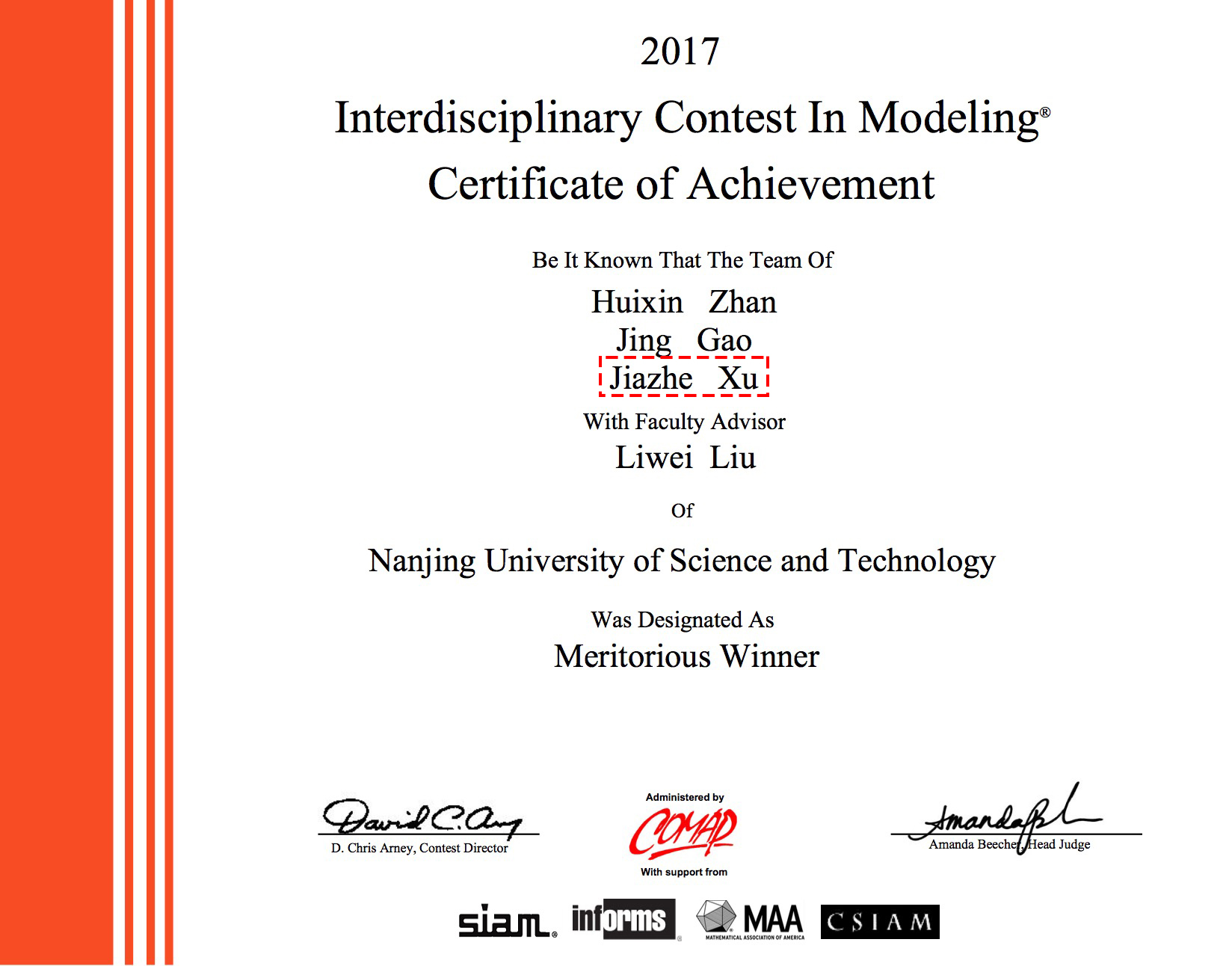2017 ICM Problem E
本文于1571天之前发表,文中内容可能已经过时。如有疑问,请在评论区留言。
Competition Questions:2017 ICM Problem E: Sustainable CitiesNeeded!

Background:Many communities areimplementing smart growth initiatives in an effort to consider long range,sustainable planning goals. “Smart growth is about helping every town and citybecome a more economically prosperous, socially equitable, and environmentallysustainable place to live.”[2] Smart growth focuses on building cities thatembrace the E’s of sustainability—Economically prosperous, socially Equitable,and Environmentally Sustainable. This task is more important than ever becausethe world is rapidly urbanizing. It is projected that by 2050, 66 percent ofthe world’s population will be urban—this will result in a projected 2.5billion people being added to the urban population.[3] Consequently, urbanplanning has become increasingly important and necessary to ensure that peoplehave access to equitable and sustainable homes, resources and jobs.Smart growth is an urban planning theorythat originated in 1990’s as a means to curb continued urban sprawl and reducethe loss of farmland surrounding urban centers. The ten principles for smartgrowth are[4]1 Mix land uses2 Take advantage of compact building design3 Create a range of housing opportunitiesand choices4 Create walkable neighborhoods5 Foster distinctive, attractivecommunities with a strong sense of place6 Preserve open space, farmland, naturalbeauty, and critical environmental areas7 Strengthen and direct development towardsexisting communities8 Provide a variety of transportationchoices9 Make development decisions predictable,fair, and cost effective10 Encourage community and stakeholdercollaboration in development decisionsThese broad principles must be tailored toa community’s unique needs to be effective. Thus, any measure of success mustincorporate the demographics, growth needs, and geographical conditions of acity as well as the goal to adhere to the three E’s.Task:The International City ManagementGroup (ICM) needs your help implementing smart growth theories into city designaround the world. Select two mid-sized cities (any city with a population ofbetween 100,000 and 500,000 persons), on two different continents.
Define a metric to measure the successof smart growth of a city. It should consider the three E’s of sustainabilityand/or the 10 principles of smart growth.
Research the current growth plan of theselected cities. Measure and discuss how the current growth plan of each citymeets the smart growth principles. How successful are the current plansaccording to your metric?
Using smart growth principles develop agrowth plan for both cities over the next few decades. Support why you chosethe components and initiatives of your plans based on the geography, expectedgrowth rates, and economic opportunities of your cities. Use your metric toevaluate the success of your smart growth plans.
Also using your metric, rank theindividual initiatives within your redesigned smart growth plan as the mostpotential to the least potential. Compare and contrast the initiatives andtheir ranking between the two cities.
Suppose the population of each city willincrease by an additional 50% by 2050, explain in what way(s) your plansupports this level of growth? Your ICM submission should consist of a 1 pageSummary Sheet and your solution cannot exceed 20 pages for a maximum of 21pages. Note: The appendix and references do not count toward the 20 page limit.
Summary:
In teamwork, I was responsible for data collection. We Defined the multiple indicators of smart cities by quantifying the indicators of Coventry(UK), Pittsburgh(US) and other foreign smart cities as well as domestic smart cities, and collected relevant indicators of 10 major cities in mainland China, evaluated the smart city and ranked the city in terms of city ranking.Prev: Digital Controller of a Single-Inductor, Dual-Output Switch Converter


